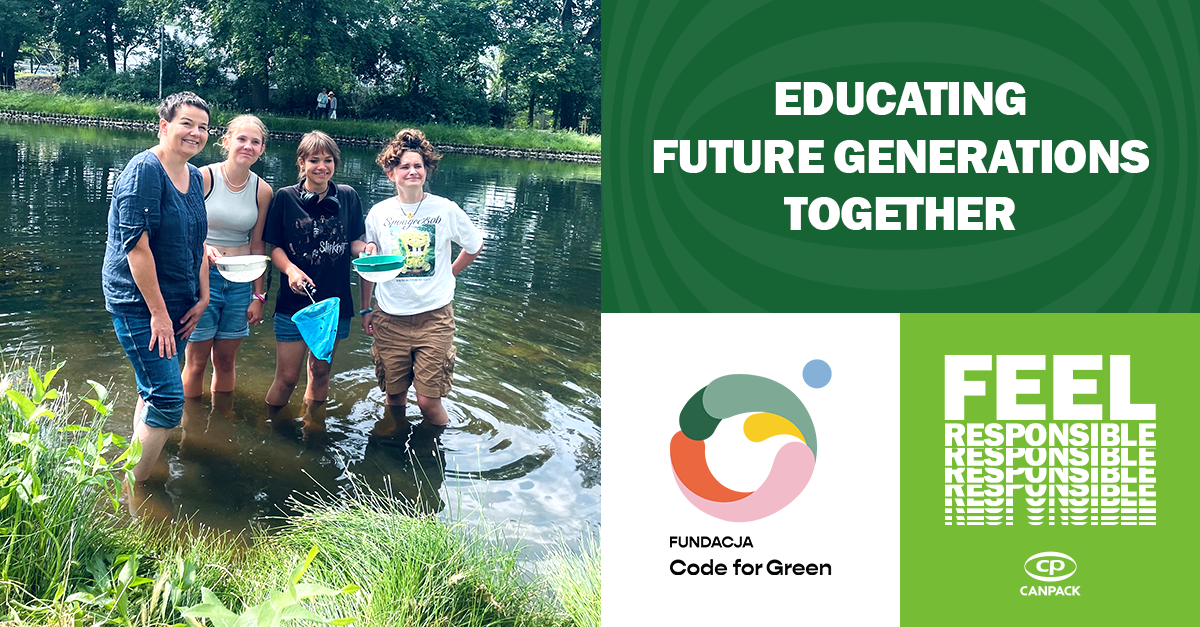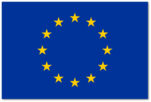CANPACK and the Code for Green Foundation Launch Partnership for “Code for Blue” Water Conservation Educational Program
Sustainability | June 14, 2024

Kraków, Bydgoszcz (June 14, 2024) – On June 14th the Bydgoszcz Canal in Poland became an innovative educational hub when the MobiLab, a mobile workshop laboratory, visited High School No. 3 on the Bydgoszcz Canal. This is how the Code for Green Foundation and CANPACK inaugurated cooperation in an educational program on water conservation. During the fieldwork class, a research team from Code for Green along with students analyzed the biodiversity levels and chemical composition of the canal’s water.
The youth participating in the class had the opportunity to learn about the precious and vital nature of water as a resource, discover the variety of living organisms inhabiting a canal flowing through the city, and understand the importance of protecting water resources, including rivers. The class at MobiLab also put a spotlight on how nature works, what benefits biodiversity brings, and how important the balance of ecosystems is for future generations.
The event marked the beginning of cooperation between CANPACK and the Code for Green Foundation on the “Code for Blue” program. The project focuses on active education about water resources and aims to equip teachers and students aged 12 and 17 with the knowledge and tools needed to identify water-related issues resources and implement effective solutions in their surroundings.
“At CANPACK we are well aware that water, climate and biodiversity are inextricably linked and interdependent, and that the future will be determined by the sustainable management of raw materials and water resources. We believe that building awareness and educating young people to meet today’s and tomorrow’s challenges is essential. The Code for Blue program we’ve been partnering provides an excellent opportunity to make this happen,” says Malgorzata Podrecka, Vice President of CANPACK.
“By being part of the program, we wish to motivate and inspire. The observations and analyses of the water environment with the use of the latest technology are designed to support the practical development of young people in creating viable solutions for the environment,” she adds.
The choice of Bydgoszcz for the launch of the cooperation was by no means accidental. With the city’s unique location at the junction of four macro-regions of the South Baltic Lake District connected to the Bydgoszcz Canal by a system of the Brda and Vistula rivers, water forms an integral part of the city’s urban and social DNA. In addition, it is in Bydgoszcz that CANPACK has one of its two aluminum beverage can factories in Poland.
“Many studies shows that we suffer from a deficit of contact with nature. I think that over 95 percent of Polish schools do not offer field education for many different reasons. We created MobiLab to get children and teachers out of school walls and show them how interesting and engaging learning outside is. In Bydgoszcz, everyone – adults and teenagers – looked for aquatic organisms, examined them and drew conclusions. Experiential education phenomenon has always been effective, and now it has become a requirement of our times.” says Małgorzata Snarska-Nieznańska, President of Code for Green Foundation.
About the Code for Green Foundation:
A Polish non-profit organization that has been making efforts since 2018 to introduce causal environmental education into schools, with a view to helping young people to address local problems using digital technologies. It trains teachers, transforming school into an environmental education hub.
About Code For Green®
Code For Green® is a program that comes in response to young people’s growing awareness of climate challenges. It introduces practical environmental education to support young people in developing viable solutions and addressing real local problems. By doing so, we hope to make the younger generations well-equipped for the new reality dictated by environmental changes. The program relies on the latest trends in education and technology, such as Design Thinking (solution design), empathy, field education and teamwork. It follows the Agile method, enabling students to design viable solutions to issues of key importance to younger generations.

